When people think of “dill,” they most likely think of a type of pickle – but when you include growing dill in your garden, there are many more benefits that go way beyond turning your cucumbers into a delicious treat!
Dill is actually a leafy vegetable and in the same plant family as celery (Apiaceae). Cultivating dill goes back to ancient Egypt some 5,000 years ago. It was used for all sorts of ailments such as digestive issues, as well as to help protect against “witches.”
Fast forward to the modern-day, and we know that there are many health benefits of consuming dill. It is a good source of vitamins A and C, calcium, iron, folate, and manganese. Dill is also good for boosting your immune system and can help ease the pains of muscle cramps and inflammation.
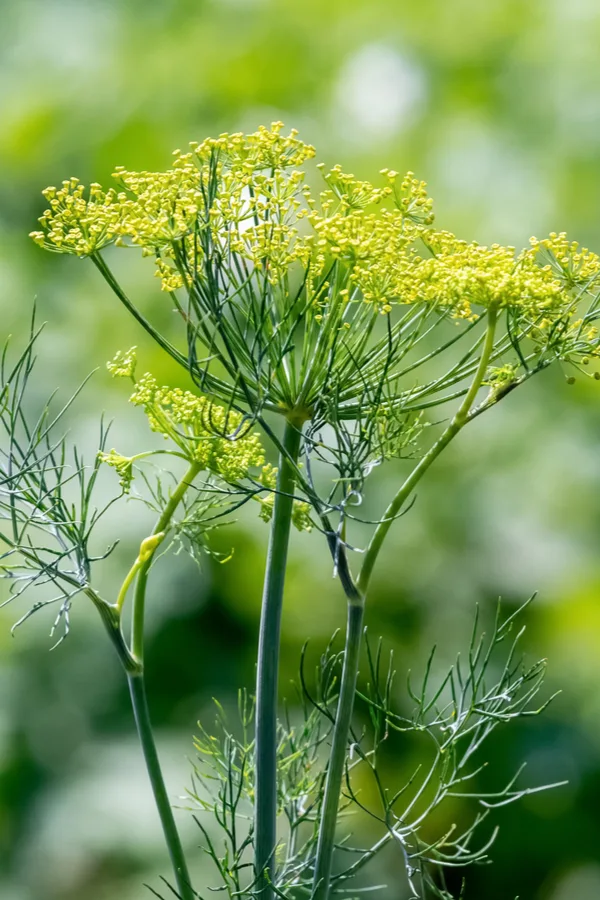
But the benefits of dill go far beyond consuming it. Dill is a great addition to any vegetable garden. From its ease of planting and growing to being the perfect companion plant for many garden favorites, it might just be the perfect aromatic herb to include this growing season!
Popular Varieties Of Dill – The Benefits Of Growing Dill
One of the best things about dill is that there are so many different varieties. Some varieties are perfect for growing in containers, which means you can enjoy the fresh flavors of dill all year long within your home. Others grow best outside and directly in the soil.
All of these options mean that you can definitely find one that fits into your growing space and needs. Here are a few of the more popular varieties of dill available to home gardeners:
Bouquet Dill
Bouquet dill is one of the most popular and widely grown varieties for outdoor sowing. It produces very fragrant leaves and grows to a height of around three feet tall. It is great for harvesting dill weed, dill seed heads, and for use in cooking and pickling. Harvest the leaves in 40 to 60 days and the flower heads around 85-100 days after planting.
Mammoth Dill
This is another popular variety that is also one of the largest. As its name might suggest, mammoth dill can grow up to six feet tall but averages more around three feet. You can harvest the leaves around 65 to 70 days after planting. The seed heads will take around 110 to 115 days to grow to maturity.
Elephant Dill
You can usually get more use out of elephant dill due to the fact that it is slower to bolt than other varieties. It is also a taller variety that grows up to around four feet tall. Harvest leaves around 60 to 90 days after planting and the heads around 110 to 140 days.
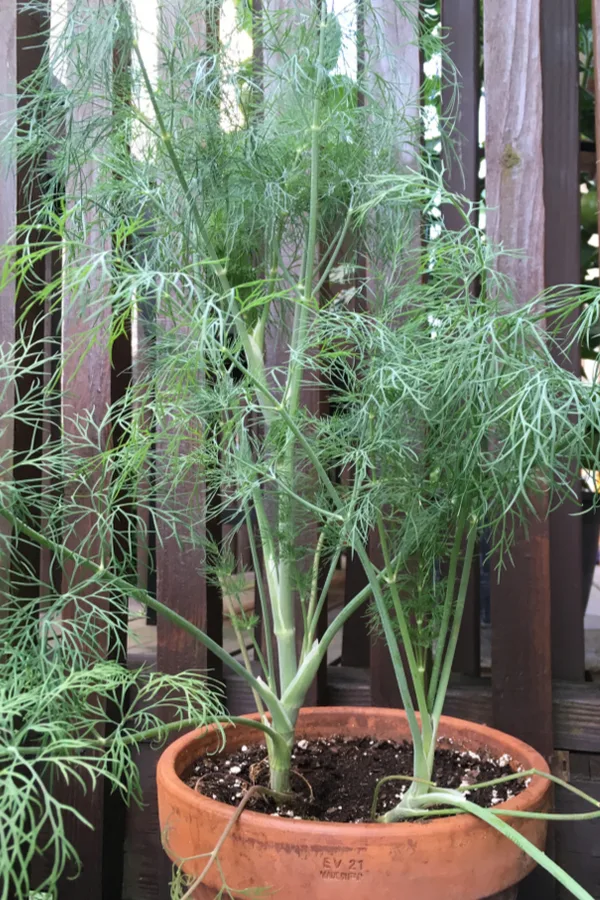
Fernleaf Dill
Fernleaf dill is a dwarf variety that is perfect for containers since it grows only up to around 18 inches tall. You can harvest the leaves around 40 to 60 days after planting and the flower heads around 90 to 100 days.
The Many Benefits Of Growing Dill
Ease Of Growing
Depending on the variety, dill can grow easily in both garden beds and in containers for all-year enjoyment. It is best when sown directly into the soil since it doesn’t like its roots being disturbed. If you must start it indoors, use biodegradable containers so you don’t have to bother the roots when it’s time to transplant.
Dill can be grown as an annual outdoors in Zones 3-9. As long as you choose a location that receives full sun and has well-draining soil, dill will likely grow. Dill germinates in around one to three weeks when soil temperatures range between 60 to 70º Fahrenheit (15 to 21º Celcius).
Once established, dill is drought tolerant and doesn’t have a lot of health issues. You also don’t even need to amend soil or fertilize during the growing season. The one thing to be careful of is overwatering, as dill simply can’t take too much moisture.
Attracting Beneficial Insects – The Benefits Of Growing Dill
While you might not consider insects as beneficial, some are very useful in garden settings. Insects like ladybugs, braconid wasps, hoverflies, and trachinid flies are all attracted to the scent of dill and are all useful garden insects.
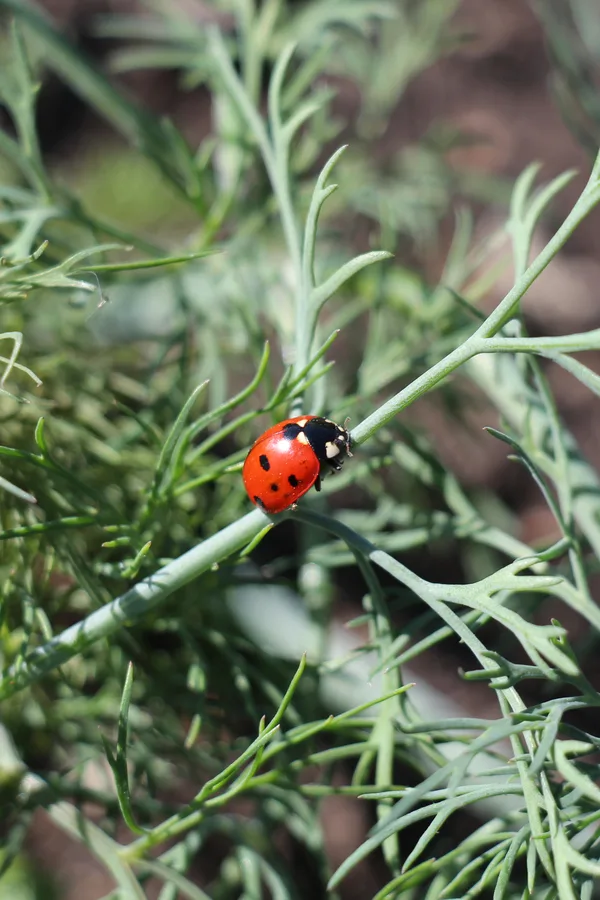
These beneficial insects help to control the population of unwanted garden pests like aphids, tomato hornworms, whiteflies, leafhoppers, squash bugs, mites, and fleas. By luring in the unwanted insects’ natural predators, you are able to keep your plants and vegetables healthy without involving insecticides and other harmful chemicals.
Bringing In Pollinators – The Benefits Of Growing Dill
It’s well known that pollinators are needed in garden settings in order for vegetables and fruit to grow. One of the best pollinators is the butterfly. Dill is a great plant for not only attracting butterflies but also caterpillars as well.
Black Swallowtail butterflies are particularly fond of dill plants. The foliage acts as a host for the caterpillars to feast on and to prepare to turn into pupae form. Adult butterflies enjoy the dill’s large yellow seed heads. More butterflies in your garden area equal more flowers being pollinated!
While on the topic of butterflies, creating a butterfly garden is also a great way to help bring in pollinators to your vegetable garden setting. For more information on how to do this, check out “How To Create A Butterfly Garden – Plants & Tips For Attracting Butterflies.”
Companion Planting – The Benefits Of Growing Dill
Due to the fact that dill helps to bring in beneficial insects and pollinators alike, it makes for a great companion plant to other vegetable crops. Here are a few plants to grow dill nearby the next time you go to create your garden plan:
Tomatoes
If you’ve ever seen a tomato hornworm, you know they look like they could be straight out of a horror film! These large, nasty green caterpillars can destroy tomato plants in no time at all, often without a gardener even knowing they are on their plants to begin with.
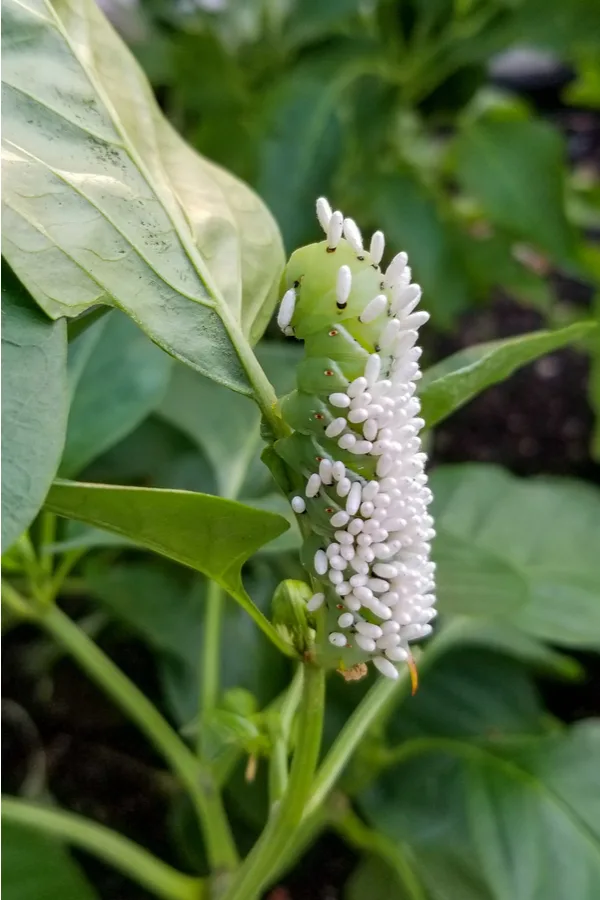
One of the tomato hornworms’ natural predators is the braconid wasp. Dill is beneficial as a companion crop to tomatoes because it helps attract braconid wasps – and a lot of them!
These wasps lay their eggs on top of the backs of a tomato hornworm. The larvae will then consume the caterpillar once they hatch. While that doesn’t sound very pleasing, it’s just one of nature’s ways of taking care of pest problems without the need for harsh chemicals.
Cucurbits
Cucumber beetles and squash bugs can often infest cucurbits such as cucumbers, squash, and melons. At all stages of their lifecycle, these little insects can consume cucurbit plants and their foliage. Young plants are often affected the worst.
Braconid wasps and tachinid flies – both of which are drawn to dill plants – help to eliminate these bugs. For more ways on controlling cucumber beetles from your garden, check out “How To Eliminate Cucumber Beetles.”
Brassicas
There are many pests that affect vegetables in the brassicas family, too. Brassicas include vegetables like broccoli, cauliflower, brussels sprouts, swiss chard, and kale.
Cabbage moths and cabbage worms both are attracted to brassicas and can ruin entire crops. Dill once again can help to attract these pests’ natural predators and help to eliminate an infestation.
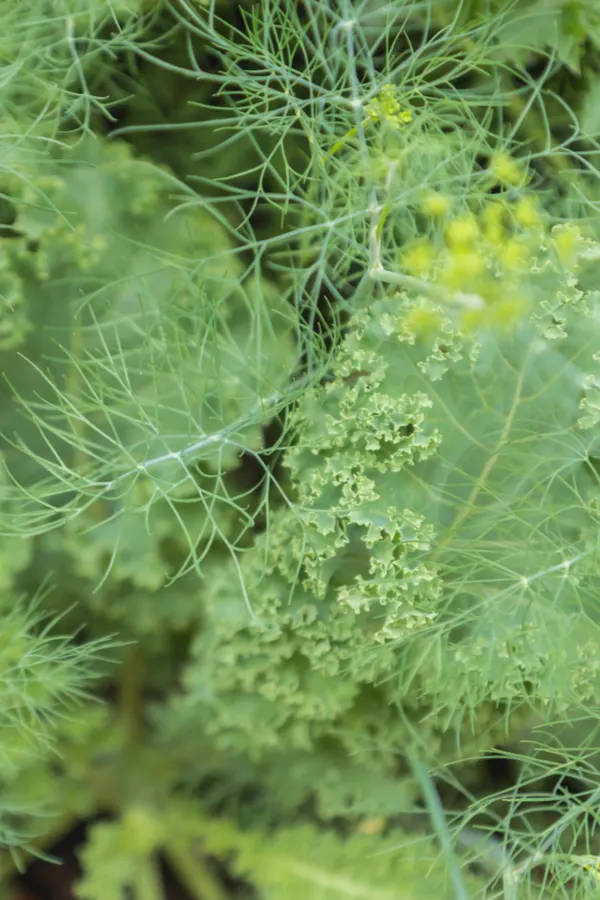
Asparagus
Aphids can feed on a large number of different crops in vegetable gardens, and asparagus is just one of their favorites. One of the natural predators of aphids is the tiny little ladybug.
Since dill plants help to attract ladybugs, it is perfect to grow right next to an asparagus patch. Dill can also self-seed, so your established asparagus patch can be protected year after year without even the need for replanting the dill.
Saving Seeds & Self Seeding – The Benefits Of Growing Dill
Purchasing new garden seeds year after year can get expensive. It can also be frustrating if you wait a bit too long to make your purchase and then find out that your favorite seed variety is sold out or missing. One of the advantages of growing dill in your garden is that you can easily and simply save their seeds.
Allow your dill plants to put out their bright yellow flowers (this will help attract the butterflies as well). After the flowers have bloomed but haven’t died off completely, simply cut off the blooms and a few inches of stem.
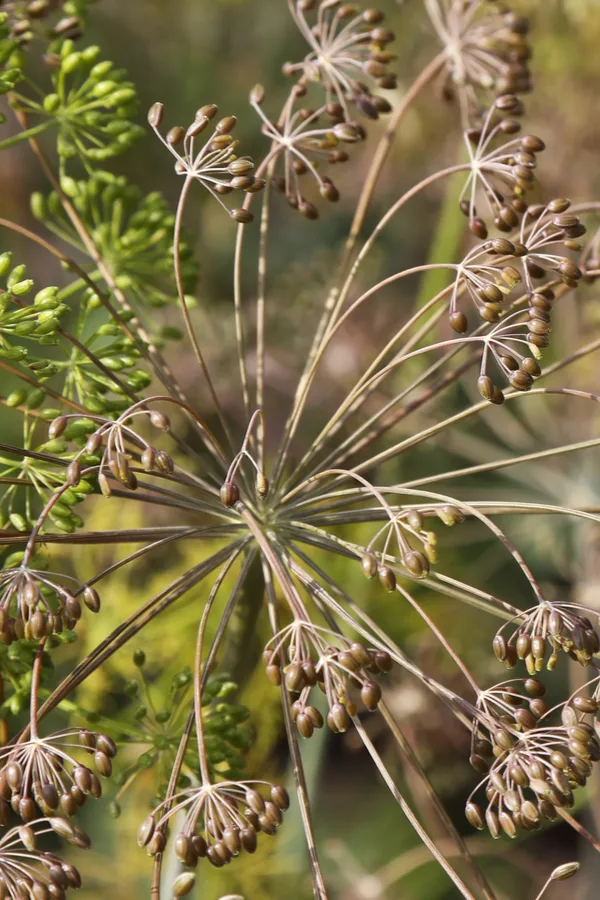
Place the heads in a paper lunch bag and keep it in a dry location. Allow the heads to dry completely, which usually takes a week or two. It’s now time to harvest the dill seeds. Gently rub the seeds off of the plant and onto a paper plate or piece of paper. Repeat until all of the seeds are off of the plant.
Toss the empty flower head and stem into your compost bin. Put the seeds in a labeled envelope and store them in a cool, dry location until you are ready to plant them next year.
It’s that easy! Saving your own seeds is a great way to save money and ensure that your favorite plant is always on hand for planting.
Self Seeding…
As an alternative, dill can self seed. At the end of the growing season, just allow the flower heads to dry out naturally. The seeds will eventually drop to the soil and sit there dormant until the next growing season if left undisturbed. Self-seeding can be a little hit or miss, especially if your local birds are feasting on the seeds.
Great for Dishes and Pickling – The Benefits Of Growing Dill
The last benefit to growing your own dill is likely the most well-known, and that is for consumption. Dill adds a fresh grassy, slightly tangy herbaceous flavor to dishes. Some people even notice a hint of anise flavors as well. And while you can purchase dried dill, nothing beats fresh!
Not only can the leaves of a dill plant be used for dishes, but the seeds and flower heads can be used as well. Keep in mind that when dill weed is used in cooking, the flavors start to die off. However, when using dill seed, the aroma and flavors intensify with cooking.
Dill is excellent in soups, stews, salads, and creamy dressings. It is also a popular ingredient in Mediterranean recipes such as fish and egg dishes.
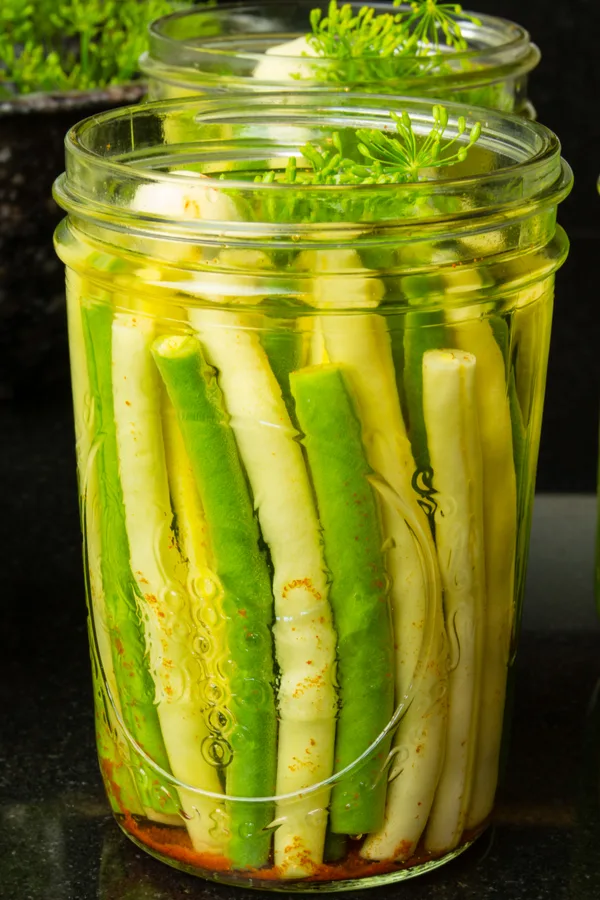
Of course – dill is incredible for making dill pickles and relish. Don’t forget that you can also use dill for other pickled vegetables like green beans. Here are some amazing dill recipes if you are in the need of some inspiration:
Our Favorite Dill Recipes:
- Dill Pickle Relish
- Dill Pickle Dip
- Instant Pot Dill Pickle Potato Salad
- Dilly Beans
- Overnight Ranch Dill Pickles
- Crispy Dill Pickles
- Refrigerator Dill Pickles
- Hot and Spicy Garlic Dill Pickles
With all of the above-mentioned advantages of growing dill and more, hopefully you’ll consider adding it to your vegetable garden this growing season!
Follow Our Facebook Page For Even More Great Tips! Simple Garden Life Facebook Page
Simple Garden Life is a website dedicated to keeping gardening fun, simple and enjoyable! We publish two new articles each week along with a new garden podcast episode every two weeks. This article may contain affiliate links.
